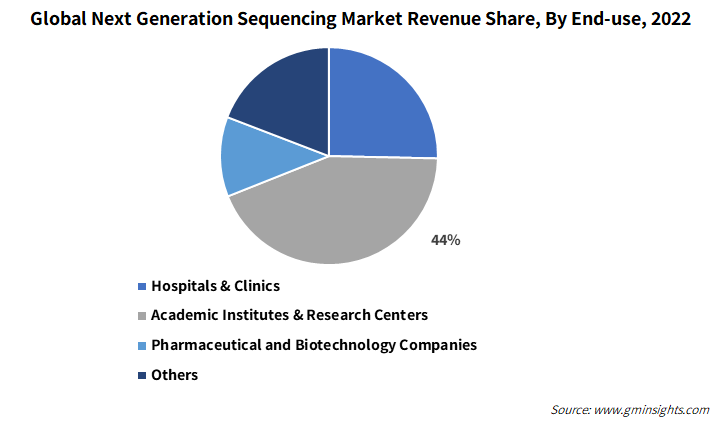Home > Healthcare > Analytical Instruments > Molecular Analysis > Next Generation Sequencing Market
Next Generation Sequencing Market Analysis
- Report ID: GMI3247
- Published Date: Apr 2023
- Report Format: PDF
Next Generation Sequencing Market Analysis
Next generation sequencing market size from the consumables segment is poised to depict a 20% CAGR through the forecast period. Bulk orders from a variety of suppliers on account of it being a useful strategy for researchers and scientists are driving product adoption. Major industry participants are also focusing on developing unique consumables to support trustworthy research outcomes, which is likely to complement segment expansion.
The exome next generation sequencing market is estimated to be valued at more than USD 20 billion in revenue by 2032. Exome sequencing is gaining positive attention among academics and researchers due to its benefits including the complete coverage of coding regions and the capability to detect changes across a wide range of applications. In November 2022, a comprehensive study concluded that clinical exome sequencing is a helpful genetic test that offers quick diagnosis for adult patients with suspected genetic diseases and concludes their diagnostic journey.
In terms of application, the report states that the NGS market from the research segment is speculated to amass a revenue size of over USD 23 billion by 2032 on account of the exponential use of whole genome, exome, and targeted sequencing by researchers to develop medications for diseases including cardiomyopathies, hereditary cancer, and retinitis pigmentosa. A team of researchers discovered that panel-based next-generation sequencing led to the identification of 69 cases of pathogenic variants, assisting in early cardiomyopathy.
By technology, the next generation sequencing market from the sequencing by synthesis segment is projected to witness growth at more than 18.5% CAGR between 2023 and 2032 propelled by continuous developments in synthesis technology that allow a full human genome sequence in a matter of hours, complementing its pace of adoption. According to a January 2023 research study, synthetic DNA can be made more affordable with the use of automation and can be a feasible greener option compared to other technologies.

The next generation sequencing market from the academic institutes & research centers segment is slated to be worth USD 12 billion by 2032 due to extensive experiments carried out in laboratories to create breakthrough next-generation sequencing treatments. Next-generation sequencing techniques offer immense development potential, which aids scientists in discovering cures for illnesses that were previously incurable. In a 2022 study, researchers combined the CRISPR system with next-generation sequencing to speed up the development of personalized treatment of cancer.

The next generation sequencing market in North America is expected to reach over USD 21 billion by 2032, attributed to rising incidences of cancer and genetic disorders in the region. Furthermore, consistent efforts by market players to create technologically upgraded next-generation sequencing solutions are fueling industry progression.

